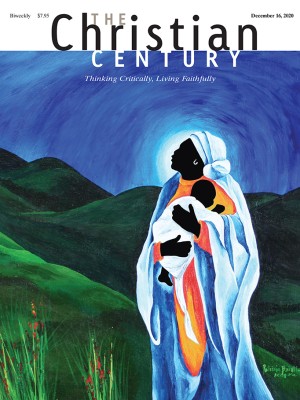Seniors form COVID-19 pods to ward off isolation this winter

For a month, Richard Besdine and his wife discussed whether to see family and friends indoors this fall and winter.
He thinks they should, so long as people have been taking strict precautions during the coronavirus pandemic. She’s not convinced it’s safe, given the heightened risk of viral transmission in indoor spaces.
Both are well positioned to weigh in on the question. Besdine, 80, was the longtime director of the division of geriatrics and palliative medicine at Brown University’s Alpert Medical School. His wife, Terrie Wetle, 73, also an aging specialist, was the founding dean of Brown’s School of Public Health.
“We differ, but I respect her hesitancy, so we don’t argue,” Besdine said.
Older adults in all kinds of circumstances—those living alone and those who are partnered, those who are in good health and those who are not—are deliberating what to do as days and nights turn chilly and COVID-19 cases rise across the country.
Read our latest issue or browse back issues.
Some are forming bubbles or pods: small groups that agree on pandemic precautions and will gather in person in the months ahead. Others are planning to go it alone.
Judith Rosenmeier, 84, of Boston, a widow who’s survived three bouts of breast cancer, doesn’t intend to invite friends to her apartment or visit them in theirs.
Since mid-March, Rosenmeier has been outside only three times: once to go to the eye doctor and twice to walk with a few friends. After living in Denmark for most of her adult life, she doesn’t have a lot of close contacts in Boston. Her son lives in Scotland.
She said there’s a good chance she’ll be alone this holiday season. “But I’ll survive.”
A friend who lives nearby, Joan Doucette, 82, is determined to maintain in-person social contacts. She and her husband, Harry Fisher, 84, have formed a pod with two other couples in their nine-unit building. All are members of Beacon Hill Village, an organization that provides various services to seniors aging in place. Doucette sees her pod almost every day.
“We’re always running up and down the stairs or elevator and bringing each other cookies or soup,” she said. “I don’t think I would have survived this pandemic without that companionship.”
The couples have dinner together about once a week, said Jerry Fielder, 74, who moved to Boston two years ago with his partner, Daniel, 73. He said he feels safe because “we know where everyone goes and what they do: we’re all on the same page. We go out for walks every day, all of us. Otherwise, we’re very careful.”
Julie Freestone, 75, and her husband, Rudi Raab, 74, are “pretty fanatic” about staying safe during the pandemic. This winter, Freestone isn’t planning to see people inside. She’ll visit with people in groups virtually. One is her monthly women’s group, which has been getting together over Zoom. “In some ways, I feel we’ve reached a new level of intimacy, because people are struggling with so many issues—and we’re all talking about that,” she said.
“I think you need to redefine bubbles,” continued Freestone, who’s on the board of Ashby Village, a Berkeley, California-based organization for seniors aging in place that’s hosting lots of virtual groups. “It should be something you feel a part of, but it doesn’t have to be people who come into your house.”
In the Minneapolis-St. Paul area, two psychologists—Leni de Mik, 79, and Brenda Hartman, 65—are calling attention to what they call SILOS, an acronym for “single individuals left out of social circles,” and their need for dependable social contact this winter and fall.
They recommend that older adults in this situation reach out to others with similar interests—people they may have met at church or in book clubs or art classes, for instance—and try to form a group. Similarly, they recommend that families or friends invite a single older friend into their pods or bubbles.
“Look around at who’s in your community. Who used to come to your house that you haven’t seen? Reach out,” de Mik recommended.
“COVID brings life and death right up in front of us,” Hartman said, “and when that happens, we have the opportunity to make crucial choices—the opportunity to take care of each other.” —Kaiser Health News
This story is part of the SoJo Exchange from the Solutions Journalism Network, a nonprofit organization dedicated to rigorous reporting about responses to social problems.






